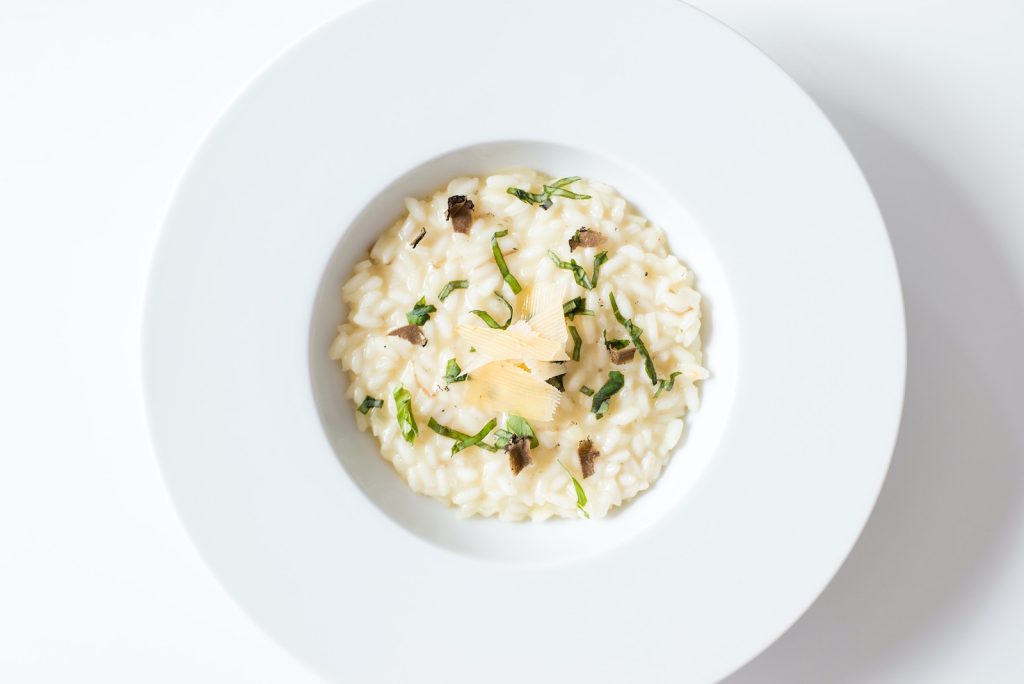
Cheesecake is a delectable dessert loved by many for its rich and creamy texture. Whether you have leftover cheesecake or want to prepare ahead for a special occasion, freezing cheesecake can be a convenient way to extend its shelf life without compromising its taste and quality. By following a few simple steps, you can freeze cheesecake successfully and enjoy it at a later time. This article provides a step-by-step guide on how to freeze cheesecake to ensure that it maintains its deliciousness when thawed.
Here’s a guide on how to freeze cheesecake:
Step 1: Choose the right cheesecake
When it comes to freezing cheesecake, it’s important to select a cheesecake that is suitable for the freezing process. Not all cheesecakes are created equal when it comes to freezing and preserving their texture and flavor. To ensure successful results, it’s best to choose a cheesecake that is specifically designed for freezing.
Classic cheesecakes made with a rich and creamy filling consisting of cream cheese and a sturdy graham cracker crust are known to freeze well. The dense and smooth texture of the cream cheese filling holds up better during the freezing process, resulting in a cheesecake that retains its integrity when thawed.
On the other hand, cheesecakes with delicate toppings or fillings, such as fresh fruit, whipped cream, or mousse, may not fare as well during freezing. Delicate components like these can become watery or lose their texture when frozen and thawed. The freezing process can cause ice crystals to form, which can affect the consistency and appearance of these delicate elements.
Additionally, cheesecakes with fillings that contain high water content, such as gelatin-based or custard-based fillings, may not freeze as successfully. The freezing process can cause these fillings to become grainy or separate, resulting in a less desirable texture when the cheesecake is thawed.
Remember, if you have a cheesecake with delicate or perishable toppings or fillings that you want to preserve, it may be best to add those components after thawing the cheesecake rather than freezing them together. This way, you can enjoy the freshest and most delicious version of your cheesecake without compromising its quality.
Can I freeze a homemade cheesecake?
Yes, you can freeze a homemade cheesecake. Freezing a homemade cheesecake is a great way to extend its shelf life and enjoy it later. Ensure that the cheesecake is fully cooled before freezing, and wrap it tightly in plastic wrap or place it in an airtight container to prevent freezer burn.
Can I freeze a no-bake cheesecake?
No-bake cheesecakes can be frozen, but they may experience some changes in texture and consistency compared to traditional baked cheesecakes. The creamy filling of a no-bake cheesecake may become slightly denser after freezing. It is recommended to wrap the no-bake cheesecake tightly in plastic wrap or place it in an airtight container before freezing to protect it from freezer burn. Thaw it in the refrigerator for several hours or overnight before serving.
Step 2: Allow the cheesecake to cool
Before you freeze a cheesecake, it is crucial to let it cool down completely. Allowing the cheesecake to reach room temperature or cool in the refrigerator is important for maintaining its texture and overall quality during the freezing process.
When a cheesecake is taken out of the oven, it is still warm, and the heat trapped inside can create steam and moisture. If you were to immediately place a warm cheesecake in the freezer, the temperature difference would cause condensation to form. This condensation can accumulate on the surface of the cheesecake and negatively impact its texture, making it soggy or mushy when thawed.
By allowing the cheesecake to cool, you give it time to release excess heat and let any moisture evaporate. This cooling process helps the cheesecake to set and firm up properly, ensuring that it maintains its desired texture and structure.
It is recommended to cool the cheesecake at room temperature for about an hour or until it no longer feels warm to the touch. Afterward, you can transfer it to the refrigerator to chill further if needed. Cooling the cheesecake in the refrigerator not only helps it reach an optimal temperature for freezing but also helps it retain its freshness and prevent any potential spoilage.
Taking the time to cool the cheesecake properly before freezing minimizes the risk of condensation forming on its surface, which can lead to a loss of texture and affect the overall quality of the dessert. This simple step is essential in ensuring that your frozen cheesecake remains delicious and satisfying when thawed and enjoyed later.
Step 3: Prepare the cheesecake for freezing
When preparing a cheesecake for freezing, the method can vary depending on whether you have a whole cheesecake or individual slices. Properly preparing the cheesecake ensures that it remains intact and is easy to handle when it comes time to freeze and later thaw.
If you have a whole cheesecake, it’s important to carefully remove it from the pan before freezing. Begin by running a sharp knife around the edges of the cheesecake, separating it from the sides of the pan. This will help prevent any sticking and make it easier to remove.
Once the cheesecake is loosened from the sides of the pan, gently lift it out using a spatula or two large flat utensils. Be cautious to support the bottom of the cheesecake as you lift it to avoid any cracking or breaking. It may be helpful to slide a thin, flat object, such as a cardboard cake round or a flat plate, underneath the cheesecake to provide stability during the transfer.
By placing the cheesecake on a cardboard cake round or a flat plate, you ensure that it maintains its shape and structure while being moved and frozen. The flat surface of the round or plate helps distribute the weight of the cheesecake evenly and prevents any indentation or deformation.
If you have individual slices of cheesecake, you have the option to leave them in their original pan or transfer them to a baking sheet lined with parchment paper. Leaving the slices in the pan they were initially cut in can be convenient for storage. However, transferring them to a baking sheet lined with parchment paper allows for more efficient freezing and easier handling. The parchment paper prevents the slices from sticking to the pan or each other, making it simpler to separate them when you want to thaw and serve individual portions.
Properly preparing the cheesecake for freezing by removing it from the pan and placing it on a stable surface or using parchment paper for individual slices ensures that the cheesecake maintains its shape and can be easily handled during the freezing and thawing process. This step helps preserve the visual appeal and overall integrity of the cheesecake, so it remains just as delicious when it’s time to enjoy it later.
Can I freeze individual slices of cheesecake?
Yes, you can freeze individual slices of cheesecake. Freezing individual slices is a convenient option if you want to portion out servings for later consumption. Wrap each slice tightly in plastic wrap or place them in separate airtight containers to prevent freezer burn and maintain their freshness. This way, you can easily thaw and enjoy individual slices of cheesecake whenever desired without having to defrost the entire cake.
Step 4: Wrap the cheesecake
When freezing a cheesecake, it is essential to wrap it properly to protect it from freezer burn and maintain its moisture. Freezer burn occurs when food is exposed to air in the freezer, causing dehydration and the development of ice crystals on its surface. By tightly wrapping the cheesecake, you create a barrier that helps prevent moisture loss and maintain its texture and flavor.
To begin, use either plastic wrap or aluminum foil to wrap the cheesecake. Both materials are effective in creating a protective layer, so you can choose whichever you prefer or have readily available. Ensure that the cheesecake is completely covered, including the top, sides, and bottom, to prevent any part of it from being exposed to air.
When wrapping the cheesecake, it’s important to make the wrap as airtight as possible. This means pulling the plastic wrap or foil snugly around the cheesecake, eliminating any gaps or openings. A tight seal helps to prevent air from coming into contact with the surface of the cheesecake, reducing the risk of freezer burn.
It is crucial to wrap the cheesecake without applying too much pressure or squeezing it excessively. You want to maintain the shape and structure of the cheesecake while ensuring a secure wrap. Be gentle, yet firm, when covering the cheesecake to strike the right balance.
Step 5: Place in a freezer-safe container
After tightly wrapping the cheesecake, it’s important to provide an additional layer of protection by placing it in a freezer-safe container or a resealable freezer bag. This step helps safeguard the cheesecake from potential odors and further reduces the risk of freezer burn, ensuring that it stays fresh and delicious during its time in the freezer.
A freezer-safe container or bag provides a secure and enclosed environment for the cheesecake, preventing any external odors from permeating the dessert. The flavors of other foods in the freezer can transfer to the cheesecake if it’s not properly sealed, compromising its taste and quality. Using a designated container or bag helps maintain the integrity of the cheesecake’s flavor profile.
When selecting a freezer-safe container, opt for one that fits the size of the cheesecake snugly, leaving minimal air space. This helps minimize the amount of air that comes into contact with the cheesecake, reducing the risk of freezer burn. A container with a tight-fitting lid is ideal, as it provides an airtight seal.
If you choose to use a resealable freezer bag, ensure it is designed specifically for freezer use and is of high quality. Place the wrapped cheesecake carefully inside the bag, expelling as much air as possible before sealing it. The absence of excess air helps maintain the quality of the cheesecake and prevents the formation of ice crystals.
Can I freeze cheesecake in a glass container?
Yes, you can freeze cheesecake in a glass container. Glass containers are a suitable option for freezing cheesecake as they provide an airtight and secure seal. Ensure that the glass container is freezer-safe and leave enough headspace to accommodate any potential expansion during freezing. Remember to wrap the cheesecake tightly with plastic wrap or use a lid to prevent air exposure and freezer burn.
Step 6: Label and date the container
Labeling and dating the container or bag in which the cheesecake is stored is a crucial step in the freezing process. It helps you keep track of the cheesecake’s freshness and ensures that it is consumed within a suitable time frame, promoting food safety and optimal taste.
By clearly labeling the container or bag with the date of freezing, you establish a reference point for how long the cheesecake has been in the freezer. This is important because frozen foods, including cheesecake, can start to deteriorate in quality over time. The flavors, texture, and overall appeal may gradually decline as the cheesecake stays in the freezer for an extended period.
Having the date of freezing clearly labeled allows you to monitor and manage the cheesecake’s storage time effectively. It helps you keep track of how long the cheesecake has been frozen, so you can plan to consume it before any significant loss of quality occurs.
Additionally, labeling the container or bag helps avoid confusion if you have multiple items in the freezer or if you’re freezing different flavors or varieties of cheesecake. It allows you to quickly identify which cheesecake is which and helps prevent mix-ups or accidental disposal.
To label the container or bag, you can use adhesive labels, masking tape, or permanent markers. Write the date of freezing in a visible and readable manner, ensuring that it’s clear and easy to understand even after a long time in the freezer.
Step 7: Freeze the cheesecake
Once the cheesecake is properly wrapped, placed in a freezer-safe container or bag, and labeled with the date of freezing, it’s time to carefully position it in the freezer for the freezing process. Proper handling and placement ensure that the cheesecake maintains its shape, texture, and overall quality during its time in the freezer.
When placing the cheesecake in the freezer, it is crucial to do so in a flat and stable manner. Choose a spot in the freezer where the cheesecake can sit undisturbed without being tilted or jostled. Placing it on a flat surface, such as a freezer shelf, is ideal to maintain its shape.
Avoid stacking anything on top of the cheesecake or placing it in a location where other items might press against it. The weight and pressure from other items can cause the cheesecake to become misshapen, crushed, or damaged. It’s important to give the cheesecake ample space and ensure that it remains undisturbed throughout the freezing process.
By freezing the cheesecake in a flat and stable position without any external pressure, you help maintain its structural integrity. This allows the cheesecake to freeze evenly and prevents any unwanted changes to its shape or texture.
It’s worth noting that the optimal freezing time for cheesecake may vary depending on the recipe and specific instructions. As a general guideline, most cheesecakes can be stored in the freezer for up to two to three months without a significant decline in quality. However, it’s always recommended to check the specific recipe or manufacturer’s instructions for any recommended freezing duration.
How long can I freeze cheesecake in the freezer?
Cheesecake can be stored in the freezer for up to 2 to 3 months without a significant loss in quality. For the best results, it is recommended to tightly wrap the cheesecake in plastic wrap or place it in an airtight container before freezing to prevent freezer burn and maintain freshness. Beyond 3 months, the cheesecake may still be safe to eat, but its texture and flavor may deteriorate. It is always advisable to label the cheesecake with the date of freezing to keep track of its storage duration.
What should I do if my frozen cheesecake develops ice crystals?
If your frozen cheesecake develops ice crystals, it is a sign of freezer burn. To address this issue, you can carefully remove the affected areas by gently scraping off the ice crystals using a knife or spatula. Once the ice crystals are removed, you can proceed with thawing the cheesecake following the recommended thawing method to minimize further moisture loss and maintain the best possible texture.
Step 8: Thaw the cheesecake
When the time comes to enjoy your frozen cheesecake, it’s important to thaw it properly to ensure that it regains its original texture and taste. The best method for thawing a cheesecake is to do so slowly and gradually in the refrigerator overnight.
Transferring the frozen cheesecake from the freezer to the refrigerator allows it to thaw in a controlled environment. This gradual thawing process helps prevent rapid temperature changes that could potentially affect the texture and taste of the cheesecake.
Thawing the cheesecake in the refrigerator ensures that it defrosts evenly. The cold temperature of the fridge allows the cheesecake to thaw gradually, giving it ample time to regain its firmness without causing any significant changes in texture or structure. Slow thawing helps maintain the creamy, smooth consistency that is characteristic of a well-made cheesecake.
It’s important to plan ahead and allow enough time for the cheesecake to thaw in the refrigerator. Overnight thawing is generally recommended, as it provides a sufficient amount of time for the cheesecake to defrost thoroughly. However, the exact thawing time can vary depending on the size and thickness of the cheesecake, so it’s advisable to check its readiness periodically.
How do I properly defrost cheesecake?
To properly defrost a cheesecake, it is recommended to transfer it from the freezer to the refrigerator. Allow the cheesecake to thaw slowly in the refrigerator for approximately 4 to 6 hours per slice or overnight for a whole cake. This gradual thawing process helps maintain the texture and flavor of the cheesecake while minimizing the risk of condensation. Avoid using a microwave or placing the cheesecake at room temperature for rapid thawing, as it may result in a soggy or unevenly thawed dessert.
Step 9: Serve and enjoy
After patiently thawing the cheesecake in the refrigerator, it is finally time to indulge in its deliciousness. Serving the thawed cheesecake with your favorite toppings enhances its flavor and presentation, allowing you to savor every bite.
When the cheesecake has fully thawed, remove it from the refrigerator and carefully unwrap it. Place it on a serving platter or individual dessert plates, ready to be enjoyed. At this stage, the cheesecake should have regained its creamy texture and smoothness, resembling its original state before freezing.
To elevate the taste and presentation of the cheesecake, consider adding your favorite toppings. Fresh fruits, such as sliced strawberries, blueberries, or raspberries, can provide a burst of freshness and vibrant colors. Drizzling a rich chocolate sauce, caramel, or berry coulis over the cheesecake adds decadence and a touch of sweetness. You can also dust it with powdered sugar or sprinkle grated chocolate for an extra touch of elegance.
The choice of toppings is entirely up to your personal preferences and creativity. Feel free to experiment with different combinations or even create a themed dessert by incorporating flavors that complement the cheesecake. The toppings not only enhance the taste but also add visual appeal, making the cheesecake even more enticing.
As you serve the cheesecake, take a moment to appreciate its smooth texture, creamy consistency, and the harmonious blend of flavors. Enjoy each bite, savoring the combination of the luscious cheesecake with the added toppings.
Remember to store any leftover portions properly in the refrigerator to maintain their freshness. If you have frozen individual slices, you can refreeze them if needed, but it’s best to consume them within a reasonable time frame for the best quality.
Other related questions
Can I refreeze previously thawed cheesecake?
It is generally not recommended to refreeze cheesecake that has been previously thawed. When you thaw a cheesecake, moisture is released, which can affect its texture and taste. Refreezing the cheesecake can lead to further deterioration in quality, such as changes in texture, loss of moisture, and potential for freezer burn. It is best to plan your portions accordingly and only thaw the amount of cheesecake you intend to consume to maintain its optimal taste and texture.
How do I know if my frozen cheesecake has gone bad?
To determine if a frozen cheesecake has gone bad, there are a few signs to look out for. First, check for any visible signs of mold or unusual discoloration on the surface of the cheesecake. If there are significant ice crystals or freezer burn present, it may indicate that the cheesecake has lost its quality. Additionally, a sour or off odor is a clear indication that the cheesecake has spoiled. Lastly, if the texture of the thawed cheesecake is excessively mushy, slimy, or has an odd consistency, it is likely best to discard it as it may be unsafe to consume.
Can I use frozen cheesecake with the fresh ones?
Yes, you can use frozen cheesecake alongside fresh ones. However, keep in mind that there may be some differences in texture and flavor between the two. Thawed frozen cheesecake can be a suitable option if you’re in a pinch or looking to add variety, but it’s best to serve them separately to preserve the quality and integrity of each. Pairing frozen and fresh cheesecake can provide options for guests with different preferences and create an interesting dessert spread.
Can I freeze a cheesecake with a fruit topping?
It is generally not recommended to freeze a cheesecake with a fruit topping. Freezing can cause the fruit to become mushy and lose its texture and vibrant flavor. If you have a cheesecake with a fruit topping, it’s best to remove the topping before freezing and add it fresh when serving the thawed cheesecake. This will ensure that the fruit maintains its freshness and enhances the overall taste and presentation of the dessert.
Can I freeze a cheesecake with a graham cracker crust?
Yes, you can freeze a cheesecake with a graham cracker crust. Freezing helps preserve the crust’s texture and integrity. To freeze, ensure the cheesecake is fully cooled, then wrap it tightly in plastic wrap or place it in an airtight container. The graham cracker crust will remain stable and maintain its deliciousness when properly frozen and thawed.








